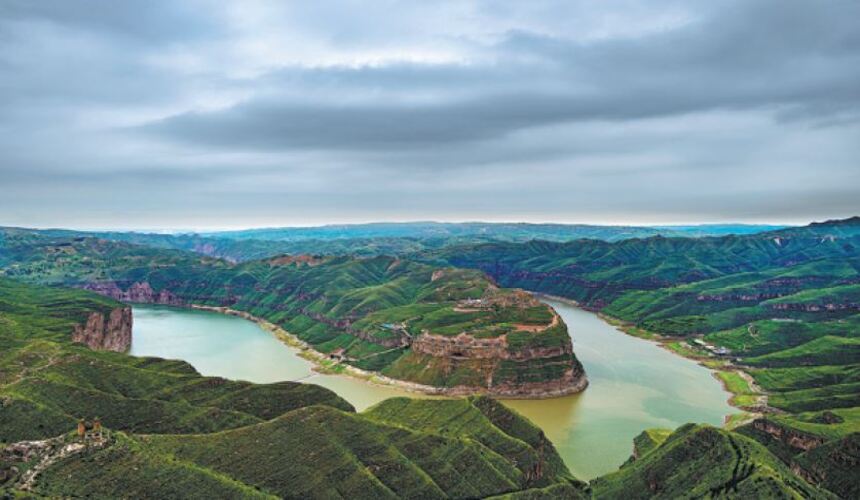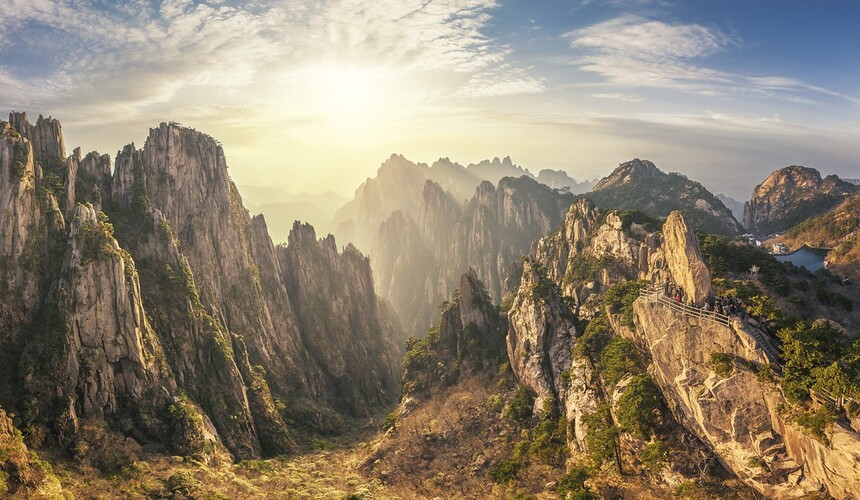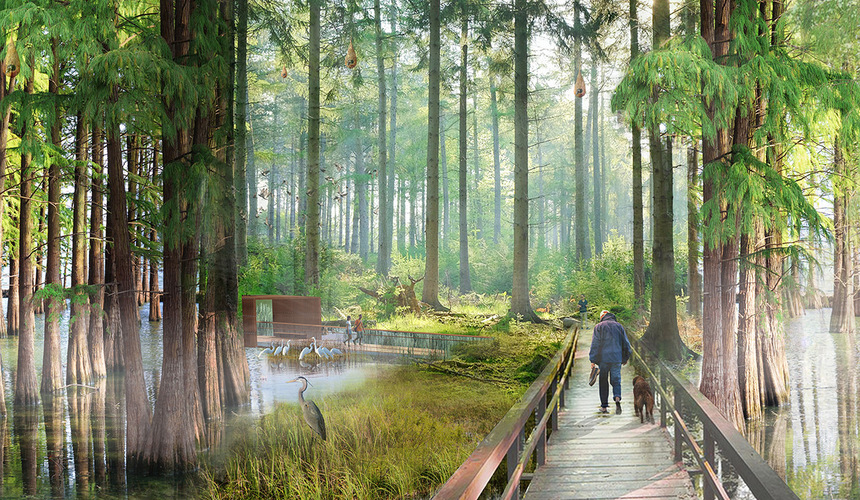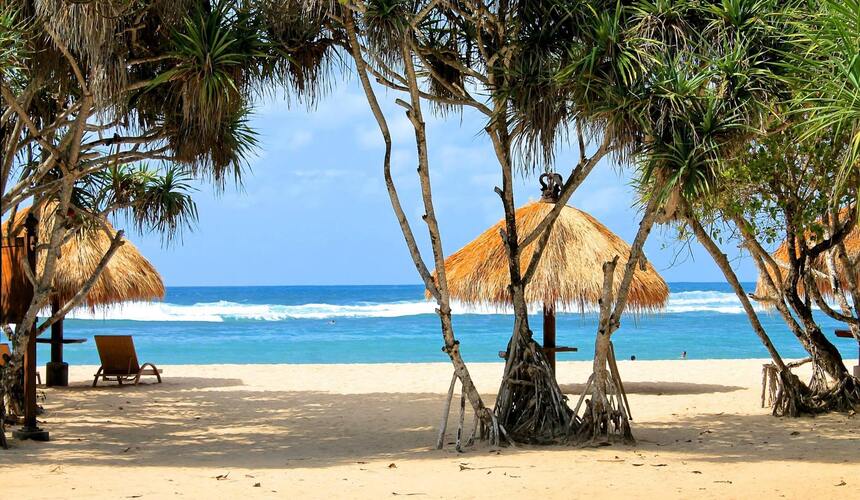
6 Most stunning sections of the Great Wall of China
Construction of the Great Wall began over 2,500 years ago during China’s Spring and Autumn Period (770 BCE to 476 BCE). Additional sections were added during subsequent eras as competing dynasties and factions sought to exert their control. Although not a continuous structure, the wall spans over 21,000 kilometers, winding through 15 provinces, 97 prefectures, and 404 counties. While some sections of the Great Wall have become popular tourist destinations, others have fallen into obscurity, disrepair, and even oblivion. Whether you are a first-time visitor or a returning one, the following destinations are sure to enhance your trip to China.
Bataizi
Bataizi village is located within the Motianling section of the Great Wall and is home to the ruins of a Gothic church built in 1876 under the direction of a German missionary. The church has undergone multiple repairs throughout its almost 150-year history, with only the bell tower remaining intact. The contrast between the ruins of the church and the rammed-earth Great Wall makes Bataizi an exceptional location to spend a morning or afternoon. Once you have completed your hike along the wall and visited the church ruins, be sure to stop by the village’s church. In addition to Bataizi, Datong should also be included in your itinerary. Visiting the Yungang Grottoes and the Hengshan Hanging Temple will make your trip even more memorable. Late summer is an ideal time to visit Bataizi, as you will see a wonderful contrast between the Great Wall and the lush green hills.

Fairy Tower
In 1373, work on the Great Wall of Simatai started. Over the course of the Ming Dynasty, it was periodically strengthened and expanded. Aim for Wangjing Tower’s breathtaking views of the Fairy Tower. Even the most daring hikers will find this route to be satisfying, and it may be completed without the need of ropes, ladders, or other necessary safety equipment. You can always count on this piece of wall to provide breathtaking vistas throughout the year. You will be amazed by the alleged tenacity of the Northern Barbarians to reach the capital after hiking to the Fairy Tower. The mountains are steep cliff walls on both sides, making it practically impossible to traverse on foot, much less by horse. It is ideal for hiking of the highest calibre.

Laoniuwan
The Great Wall and the powerful Yellow River converge at Laoniuwan. The most well-known tower of the Great Wall in this region, Wanghe Tower, was completed in 1544, while the Laoniuwan Fortress dates from 1467. Situated across a river from Inner Mongolia, Laoniuwan village is part of Xinzhou city in Shanxi province’s Pianguan County. It’s best to go in late summer or early autumn when there aren’t any spring rainstorms to cause accidents on the mountain roads or unbearably cold weather in an undeveloped area. There are very few locations along the Great Wall where it meets bodies of water, and here is the most beautiful of them. Taking a boat ride along the river is a great idea. You can marvel at the unwavering willpower of these ancient architects while taking in the natural splendour of the Yellow River Gorge.

Mutianyu
Together, Mutianyu and Jiankou form a single Stone Dragon, two connected stretches of the Great Wall that crisscross the summits of Beijing for around 25 kilometres. The Great Wall was built by millions of workers over decades, according to historical records. The best part of the “tourist wall” is Mutianyu. It was restored in the 1980s and is incredibly gorgeous and commercial at the same time. If a visitor is not fit for a walk, they can reach the summit by cable car. Jiankou, to the west of Mutianyu, is referred to as the “wild wall” because it is not marketed and requires no reservation. That being said, due to safety concerns, the local government has started to somewhat discourage trekking at Jiankou as of 2020. Although it takes less than 90 minutes to get from Beijing’s centre to Mutianyu and Jiankou without traffic, spending a night in the countryside is strongly advised if you have the time.

Dushikou
Built in the era of Emperor Jiajing (1507–1567), this piece of a single wall has stone piles that make it stand seven metres tall in certain places. It is situated in the Hebei province town of Chicheng, directly across the street from the town of Dushikou. The Great Wall near Beijing was built primarily using kiln-fired bricks, making the piled-stone wall at Dushikou distinctive. The ideal months to visit Dushikou are July and August, when the neighbouring grasslands’ undulating hills are at their most vibrant green. Cool nights are ideal for outdoor cookouts and bonfires. In Dushikou town, there are tidy and cosy farmhouse accommodations can be found.

Yongtai Turtle City
The Great Wall is more than just a physical barrier; in certain locations, towers on steep mountain summits, fortified towns, or even broad rivers are considered to be parts of the “wall.” As part of the Great Wall’s “Yellow River Defence Line,” Turtle City was constructed during the Ming Dynasty (1368–1644). It was finished in 1608 and at its height of use housed some 2,000 infantrymen and 500 cavalry troops. Currently, this fortress city is situated in north central Gansu province’s Sitan Township in Jingtai County. The military town’s unusual shape gave rise to its moniker. The west and east gates serve as the flippers, while the south gate serves as the head. The round wall of the town serves as its body, and the north gate as its tail. It’s worth your time because it’s one of the most authentic and well-preserved walled cities in China today.

By now, you surely have more ideas about the sections of the Great Wall. Are you excited to experience by yourself? Chat with our travel consultants right ahead!



